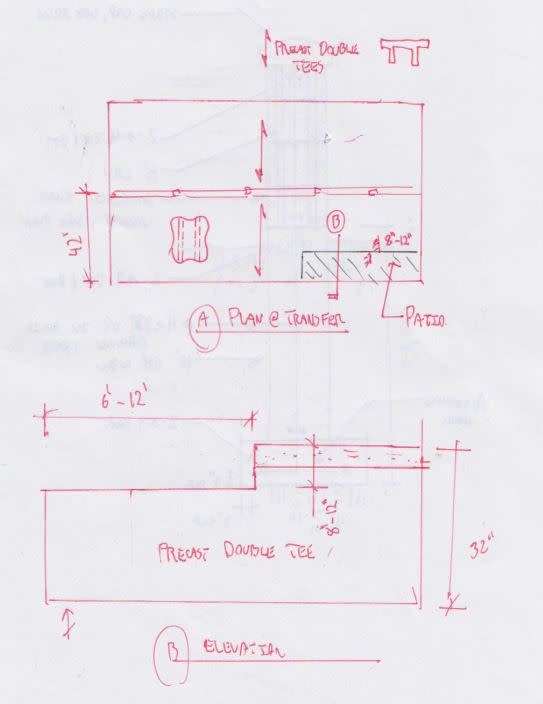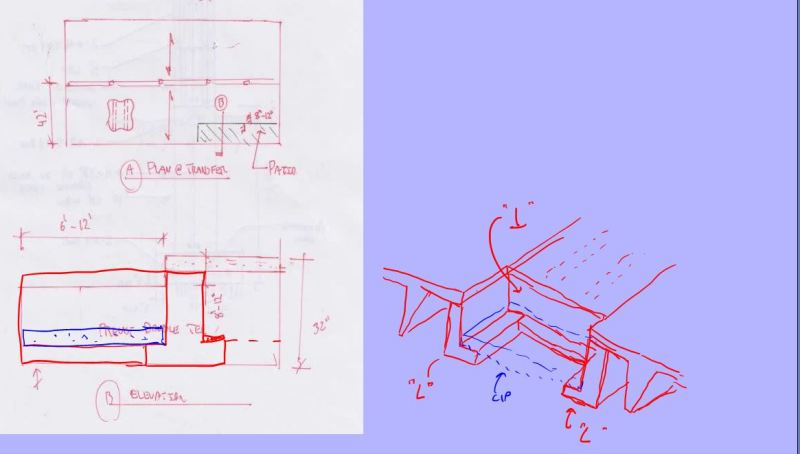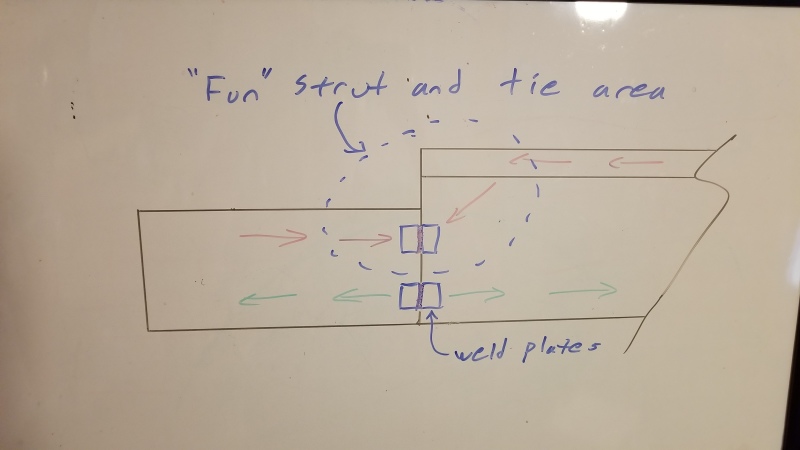KootK
Structural
- Oct 16, 2001
- 18,085
See the somewhat fictionalized rendition of my project below. Originally, it was desired to use hollow core precast plank for this second floor transfer slab. Somewhere along the line, before it landed on my desk, it was concluded that the spans were too long for 12" HC and that a double tee system would be better. As things have progressed, the question has arisen "how do we handle slab depressions?". Without egregiously sacrificing the economy of the TT's, it seems to me that they really cannot be handled.
Before I throw in the towel on this scheme and try to steer things in another direction, does anybody know of any tricks for making a go of it with the TT's? While I haven't done a TT transfer slab before, I know that it definitely has been done before. I'd think that this would be a common problem in need of solution. The only simple idea that I can come up with is to do it all in the topping. But, then, that gets heavy, expensive, thick, and generally ridiculous.

I like to debate structural engineering theory -- a lot. If I challenge you on something, know that I'm doing so because I respect your opinion enough to either change it or adopt it.
Before I throw in the towel on this scheme and try to steer things in another direction, does anybody know of any tricks for making a go of it with the TT's? While I haven't done a TT transfer slab before, I know that it definitely has been done before. I'd think that this would be a common problem in need of solution. The only simple idea that I can come up with is to do it all in the topping. But, then, that gets heavy, expensive, thick, and generally ridiculous.

I like to debate structural engineering theory -- a lot. If I challenge you on something, know that I'm doing so because I respect your opinion enough to either change it or adopt it.


